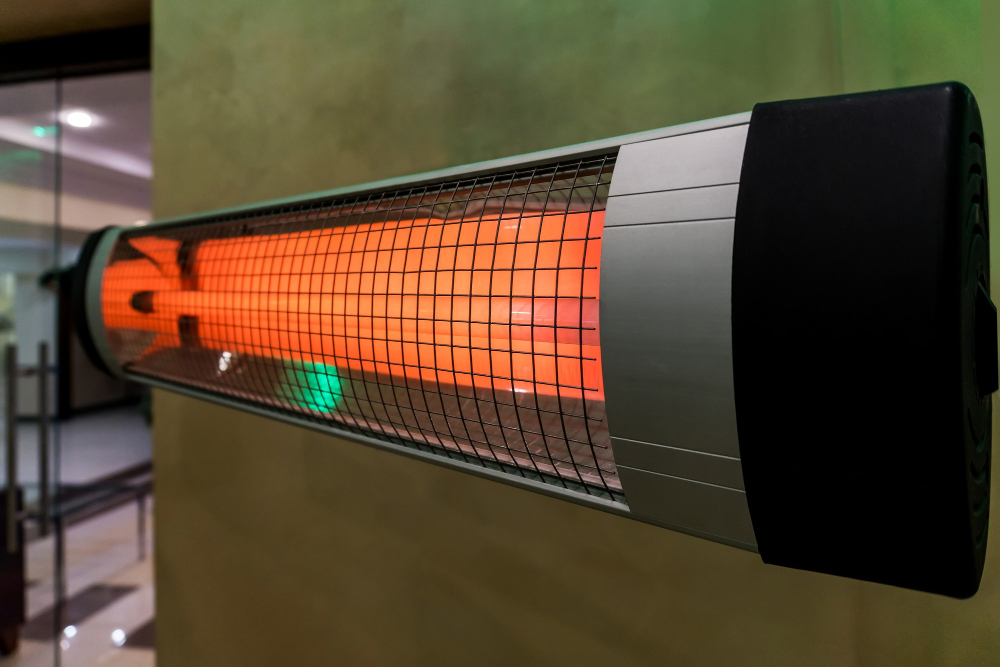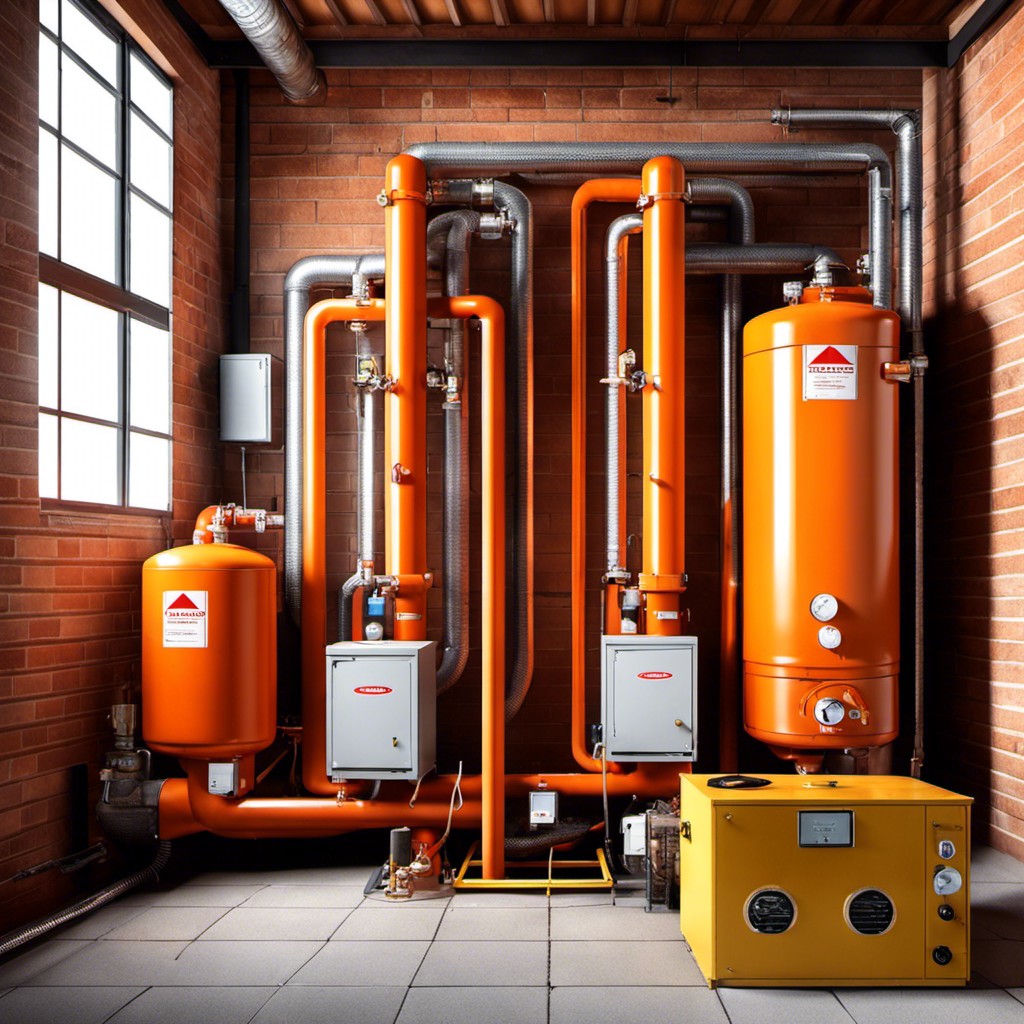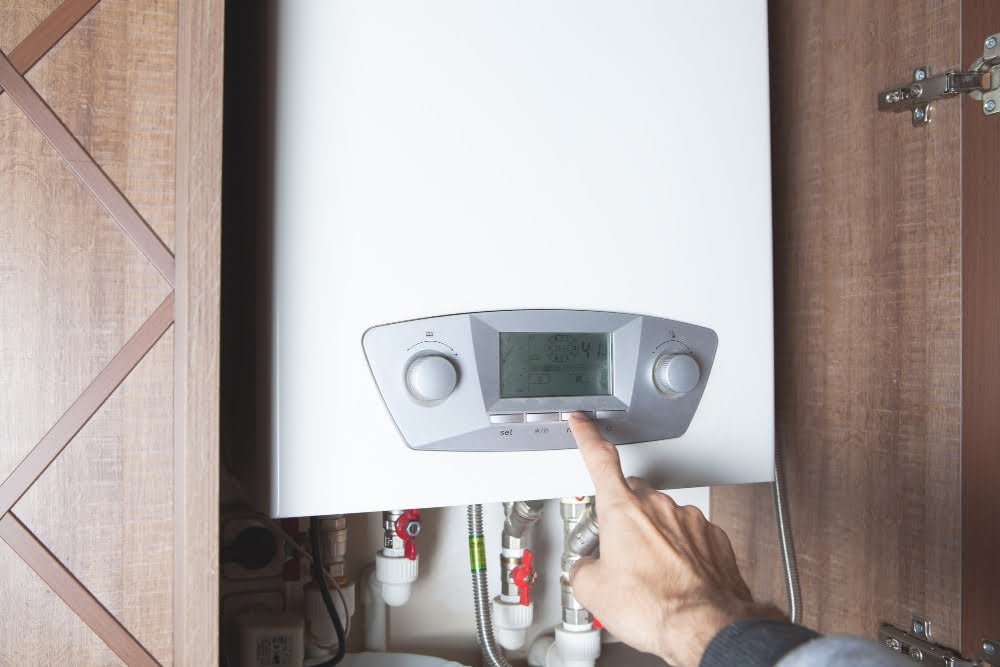Last updated on
Discover affordable and creative alternatives to electric fireplaces that will elevate your home decor without breaking the bank!
As winter approaches, the thought of curling up by a cozy fireplace becomes more appealing. However, not everyone has the luxury of owning a traditional fireplace or the budget to install one.
That’s where electric fireplaces come in as an affordable and convenient option. But what if you’re looking for something different? Something that stands out and adds a unique touch to your home decor?
In this article, we’ll explore 15 electric fireplace alternatives with their advantages and disadvantages, so you can find the perfect fit for your home without breaking the bank.
Let’s dive in!
Infrared Heaters
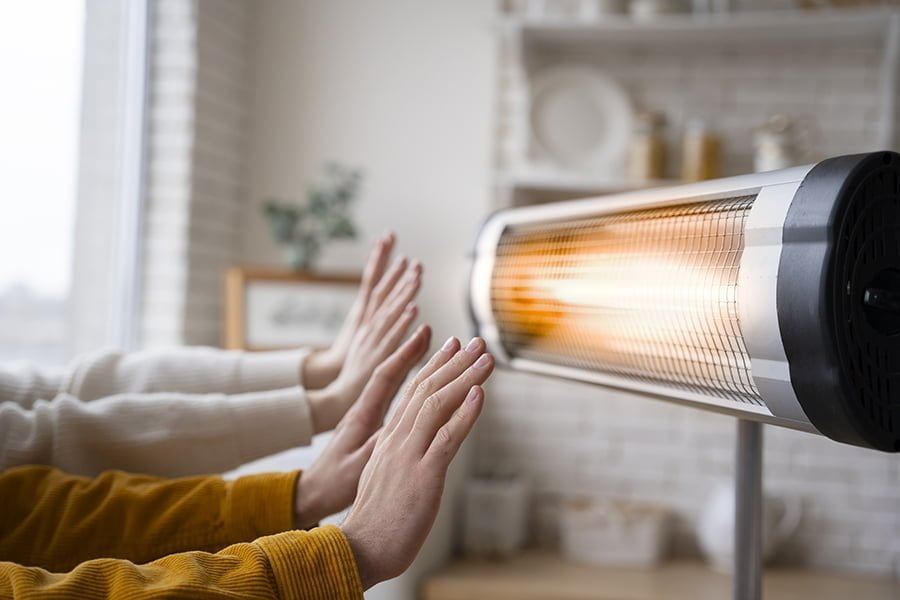
Infrared heaters are a popular alternative to electric fireplaces. They use infrared technology to heat up objects in the room, rather than just the air.
This means that they can provide more targeted and efficient heating, as well as being safer for children and pets since there is no open flame or hot surfaces.
One advantage of infrared heaters is that they are often more affordable than electric fireplaces, making them a great option for those on a budget. They also come in many different sizes and styles, so you can find one that fits your decor.
However, some people may not like that infrared heaters don’t produce flames or flickering lights like an electric fireplace does. While they do provide heat quickly and efficiently to nearby objects in the room (like people), their range isn’t very far – so if you’re looking to warm up an entire large space with one heater alone it might not be enough.
Overall though, if you’re looking for something simple yet effective at providing warmth without breaking your bank account then an Infrared Heater could be worth considering!
Pellet Stoves
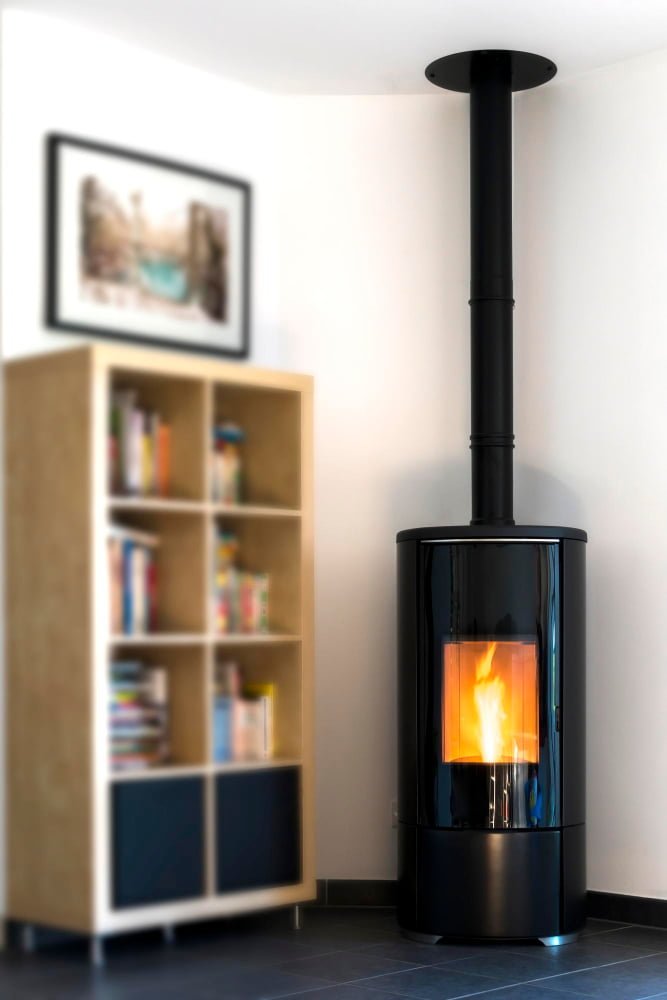
Pellet stoves are another alternative to electric fireplaces that can provide warmth and ambiance in a home. These stoves burn compressed wood pellets, which are made from sawdust and other wood waste materials.
Pellet stoves have the advantage of being more energy-efficient than traditional wood-burning stoves, as they use less fuel to produce the same amount of heat. They also emit fewer pollutants into the air compared to burning logs.
However, pellet stove installation can be costly due to venting requirements and may require professional installation. The cost of purchasing pellets for fuel can also add up over time, making it important for homeowners on a budget to consider this expense before investing in a pellet stove as an alternative heating source or fireplace option.
Despite these potential drawbacks, many homeowners find that pellet stoves offer an attractive aesthetic appeal with their flickering flames and cozy warmth during colder months.
Gas Fireplaces

Gas fireplaces are a popular alternative to traditional wood-burning fireplaces. They offer the convenience of instant heat and flame with just the flip of a switch or push of a button.
Gas fireplaces come in two types: vented and ventless. Vented gas fireplaces require an external chimney or flue, while ventless models do not need any ventilation system.
One advantage of gas fireplaces is that they are low-maintenance compared to wood-burning ones since there’s no ash, soot, or creosote buildup to clean up after use. They produce fewer emissions than their wood counterparts making them more environmentally friendly.
However, one disadvantage is that they can be expensive upfront due to installation costs for the required gas line and ventilation system if needed for vented models.
Wood-burning Stoves
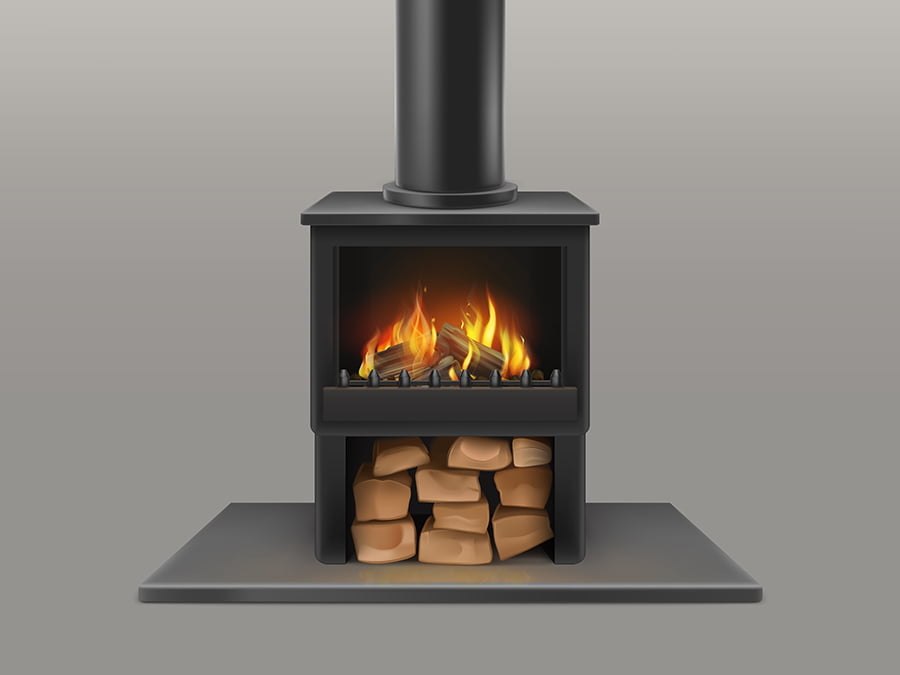
Wood-burning stoves are a classic alternative to electric fireplaces. They offer the warmth and cozy ambiance of a real fire, without the need for electricity.
Wood-burning stoves come in various sizes and styles, from traditional cast iron designs to modern steel models.
One advantage of wood-burning stoves is their cost-effectiveness. They use renewable fuel sources such as logs or pellets, which can be cheaper than electricity in some areas.
They can heat up large spaces efficiently and quickly.
However, there are also some disadvantages to consider when choosing a wood-burning stove over an electric fireplace. One major drawback is that they require regular maintenance such as cleaning out ash and soot buildup from the chimney or flue system.
Another disadvantage is that wood burning produces smoke which may not be suitable for people with respiratory problems like asthma or allergies.
Bio-ethanol Fireplaces
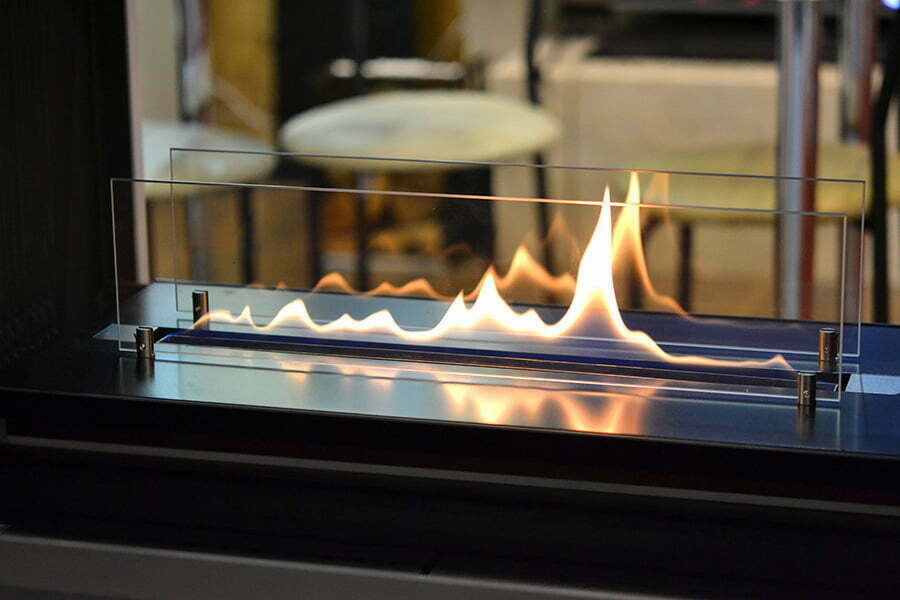
Bio-ethanol fireplaces are a popular alternative to traditional electric fireplaces. These types of fireplaces use bio-ethanol fuel, which is made from renewable resources such as corn and sugarcane.
One of the advantages of using bio-ethanol fuel is that it burns cleanly, producing no smoke or harmful emissions. This makes it an eco-friendly option for those who want to reduce their carbon footprint.
Bio-ethanol fireplaces also offer flexibility in terms of placement since they do not require any venting or installation like traditional wood-burning or gas-powered options. They come in various sizes and styles, making them suitable for different room sizes and decor themes.
However, one disadvantage is that they may not produce as much heat as other fireplace alternatives since the flame size can be limited by the amount of fuel used at once. Purchasing bio-ethanol fuel can be more expensive than electricity usage over time.
Radiant Floor Heating
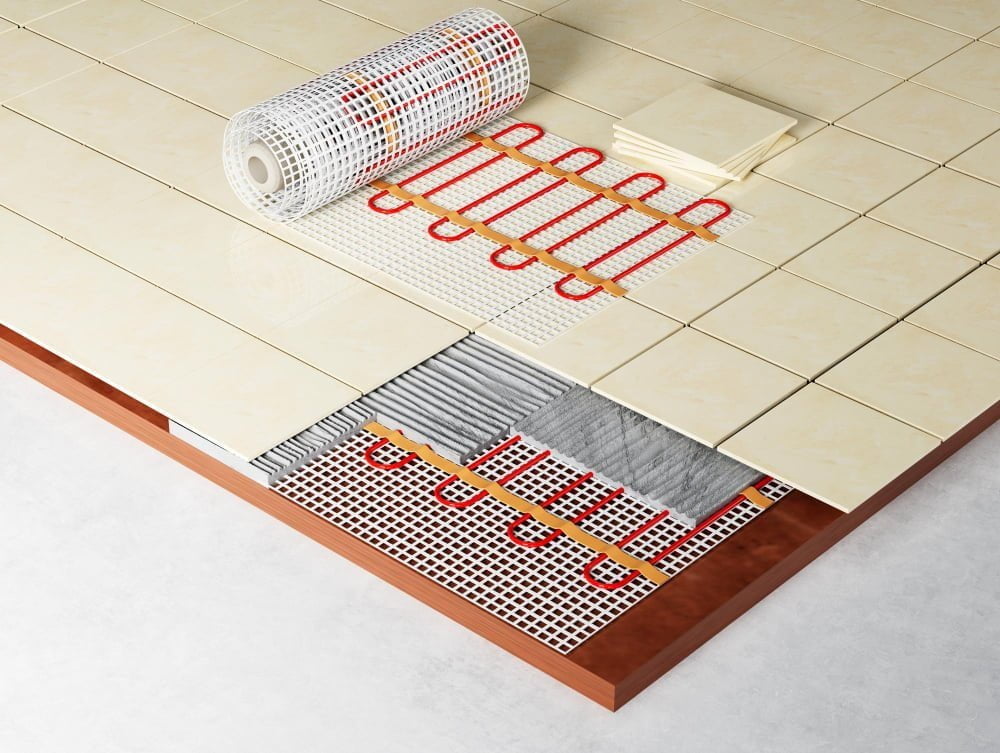
Radiant floor heating is a luxurious and energy-efficient alternative to traditional heating systems. This type of heating system involves installing pipes or electric wires beneath the flooring, which then radiates heat upwards into the room.
The advantages of radiant floor heating include even distribution of heat throughout the room, no need for bulky radiators or vents, and lower energy bills due to its efficiency. However, installation costs can be high and it may not be suitable for all types of flooring materials such as carpeting or hardwood floors that are prone to warping with excessive heat exposure.
It takes longer for this type of system to warm up a room compared to other alternatives like an electric fireplace which provides instant warmth at a fraction of the cost.
Electric Baseboard Heaters
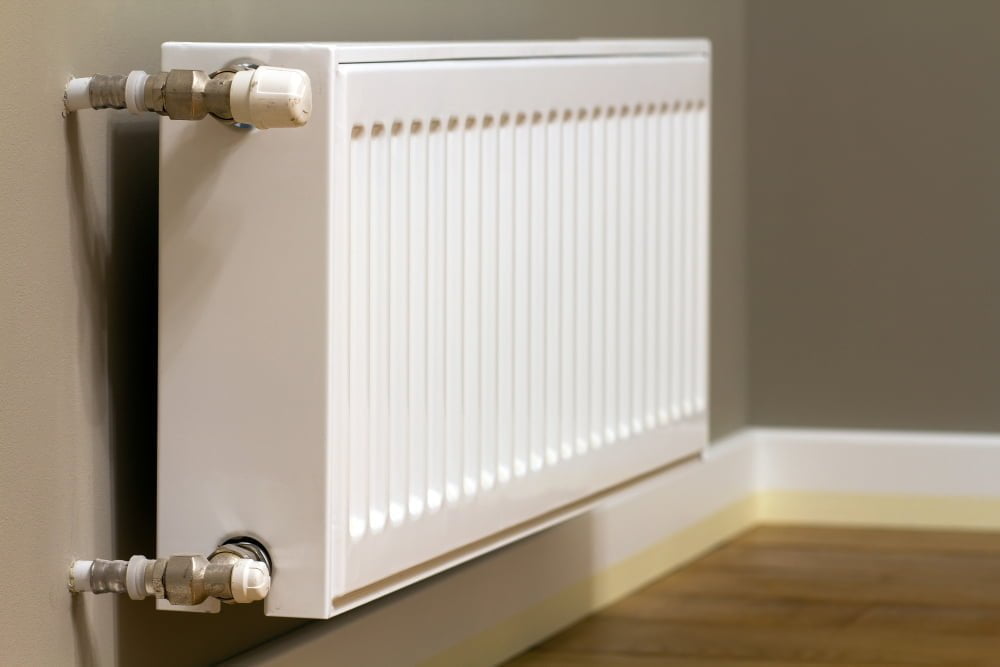
Electric baseboard heaters are another alternative to electric fireplaces. They are typically installed along the baseboards of a room and provide heat through convection.
One advantage of electric baseboard heaters is that they can be more cost-effective than traditional heating systems, as they only heat the rooms that need it rather than an entire house. They do not require any ventilation or ductwork installation, making them easy to install in any room.
However, one disadvantage of electric baseboard heaters is that they can take longer to warm up a room compared to other heating options like forced-air systems or radiant floor heating. They also tend to be less energy-efficient since hot air rises and escapes through windows and doors instead of being circulated throughout the space.
If you’re looking for an affordable way to add warmth without sacrificing style in your home decor on a budget while avoiding using an actual fireplace due to safety concerns or lack thereof – then considering installing sleek-looking electrical-based alternatives could be worth exploring!
Hydronic Heating Systems
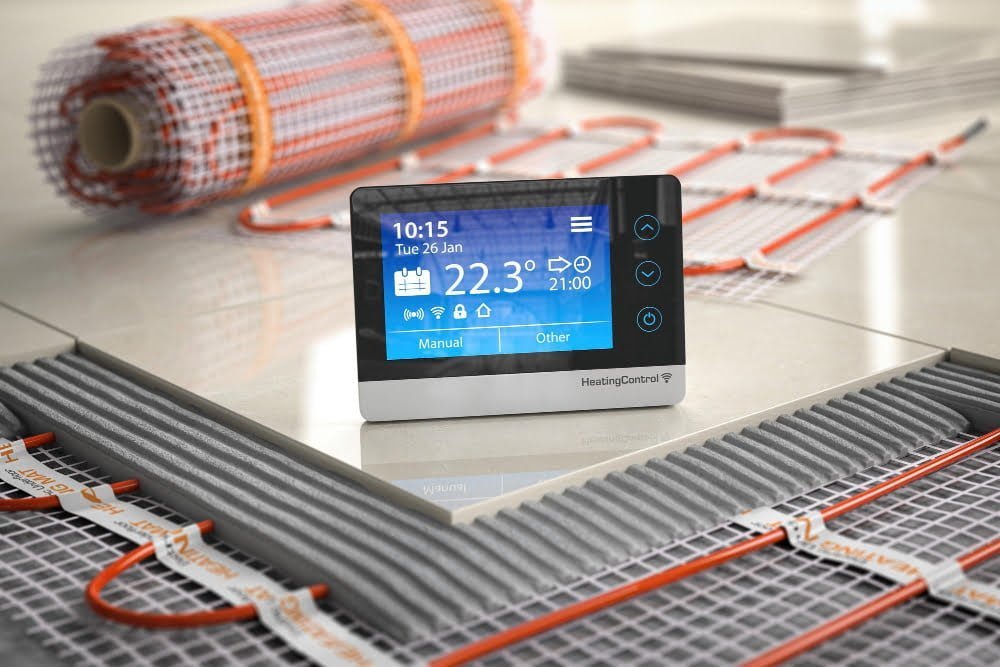
Hydronic heating systems are a great alternative to electric fireplaces. These systems use hot water or steam to heat up the space, and they can be installed under floors, in walls or ceilings.
One of the main advantages of hydronic heating is that it provides even heat distribution throughout the room without any cold spots. These systems are energy-efficient and can save you money on your utility bills in the long run.
However, there are also some disadvantages to consider before choosing a hydronic system over an electric fireplace. The installation process for these types of heating systems can be more complex and expensive than simply plugging in an electric fireplace unit.
Also, if not properly maintained or installed correctly by professionals with experience working with this type of system then leaks may occur which could lead to costly repairs down-the-line.
Propane Space Heaters

Propane space heaters are a great alternative to electric fireplaces, especially for those who live in areas where electricity is expensive or unreliable. These heaters use propane gas as fuel and can provide heat quickly and efficiently.
They come in various sizes, from small portable units to larger ones that can heat up an entire room.
One advantage of propane space heaters is their portability. You can easily move them around the house or take them with you when traveling outdoors.
They also don’t require any installation, making them ideal for renters who cannot make permanent changes to their living spaces.
However, there are some disadvantages to using propane space heaters as well. One major concern is safety since they produce carbon monoxide gas which could be harmful if not properly ventilated or used in a poorly ventilated area.
They require regular maintenance such as cleaning and replacing filters which adds extra costs over time.
While propane space heaters may not be the perfect solution for everyone’s heating needs due to safety concerns and maintenance requirements; they remain an excellent option worth considering when looking at alternatives to electric fireplaces on a budget!
Ceramic Space Heaters
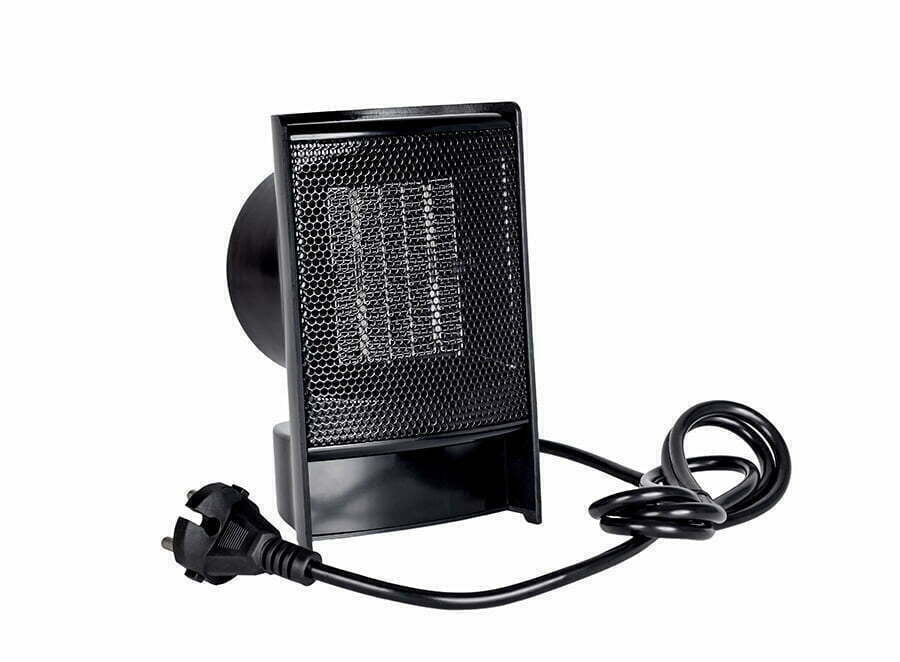
Ceramic space heaters are a popular alternative to electric fireplaces. They come in various sizes and designs, making them versatile for any room in the house.
Ceramic heaters use electricity to heat up ceramic plates that radiate warmth into the surrounding area.
Advantages of ceramic space heaters include their affordability, energy efficiency, and portability. They are also easy to operate with simple controls and can be set on timers or thermostats for convenience.
However, there are some disadvantages to consider before purchasing a ceramic heater as an alternative to an electric fireplace. Firstly, they do not provide the same ambiance as a fireplace does since they lack flames or logs that mimic real fires.
Secondly, while they may be energy efficient when used correctly by heating small spaces directly rather than trying to warm up large areas inefficiently; if you have larger rooms then multiple units may need installing which could increase costs over time due increased electricity usage.
Oil-filled Radiators
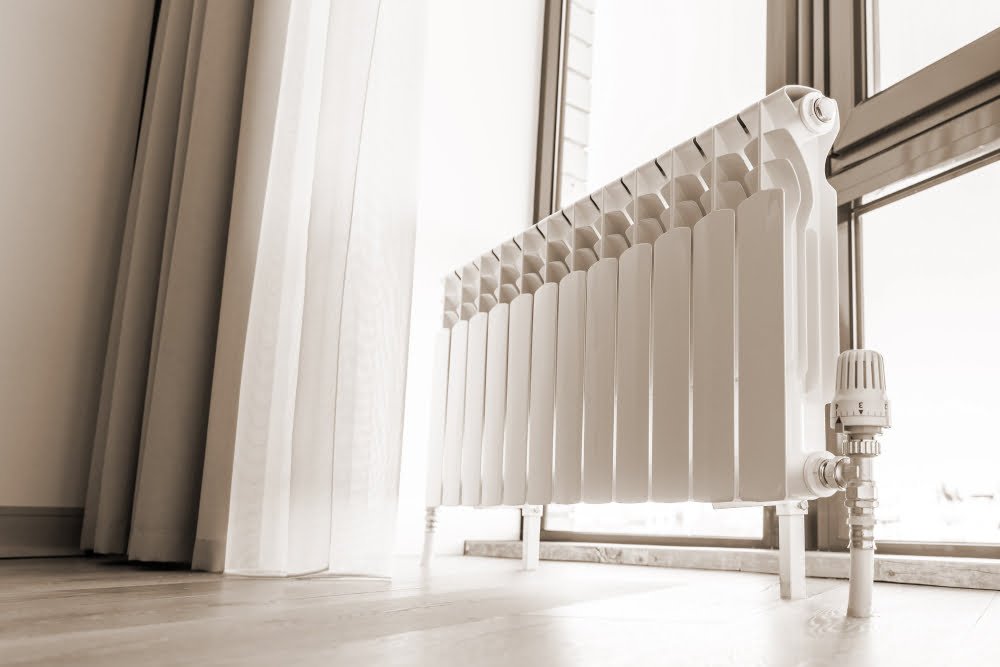
Oil-filled radiators are a great alternative to electric fireplaces, especially for those who want to save on their electricity bills. These radiators use oil as a heat reservoir and have heating elements that warm up the oil, which then heats up the surrounding air.
They come in different sizes and styles, making them suitable for any room in your home.
One of the advantages of using an oil-filled radiator is that they are energy-efficient compared to traditional space heaters or electric fireplaces. They consume less power while providing consistent warmth throughout your living space.
Another advantage is that they do not produce any noise or fumes like gas heaters do. This makes them ideal for people with allergies or respiratory problems who may be sensitive to smoke and other pollutants.
However, one disadvantage of using an oil-filled radiator is that it takes longer than other types of heaters to warm up a room since it relies on convection currents rather than forced air circulation. These units can be heavy and difficult to move around if you need portable heating solutions.
Overall though, if you’re looking for an affordable way to keep your home cozy during cold weather months without breaking the bank on electricity costs – consider investing in an oil-filled radiator!
Geothermal Heat Pumps
Geothermal heat pumps are an eco-friendly and energy-efficient alternative to electric fireplaces. These systems use the natural heat from the earth to warm up your home, making them a great option for those who want to reduce their carbon footprint.
One of the main advantages of geothermal heat pumps is that they can save you money on your energy bills in the long run. While they may have a higher upfront cost than traditional heating systems, they require less maintenance and have lower operating costs over time.
However, one disadvantage is that installing a geothermal system can be expensive and requires specific expertise. It may not be feasible for all homes depending on factors such as soil type or lot size.
If you’re looking for an eco-friendly heating solution with long-term savings potential and are willing to invest in installation costs upfront, then geothermal heat pumps could be worth considering as an alternative to electric fireplaces.
Solar Air Heater Panels
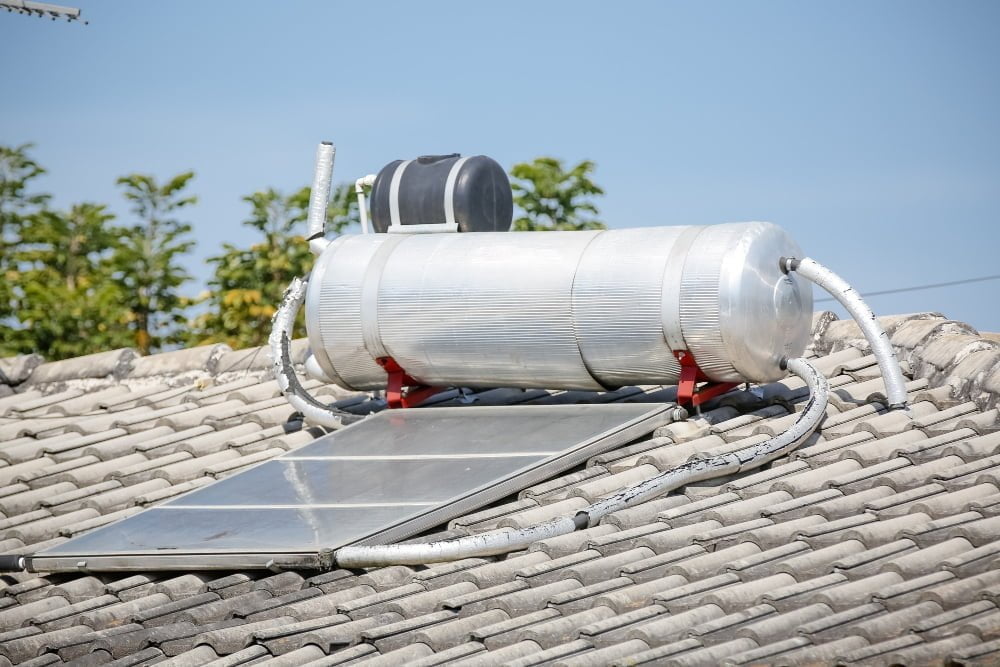
Another alternative to electric fireplaces that is gaining popularity is solar air heater panels. These panels use the sun’s energy to heat up air, which can then be circulated throughout a room using a fan or other ventilation system.
The advantages of solar air heater panels are numerous. First and foremost, they are incredibly eco-friendly and sustainable since they rely solely on renewable energy from the sun.
They also have low operating costs since there is no need for electricity or gas to power them.
However, there are some disadvantages as well. Solar air heaters require direct sunlight in order to work effectively, so their performance may be limited during cloudy days or in areas with little sunlight exposure.
Installation can be more complex than simply plugging in an electric fireplace.
Heat Recovery Ventilators
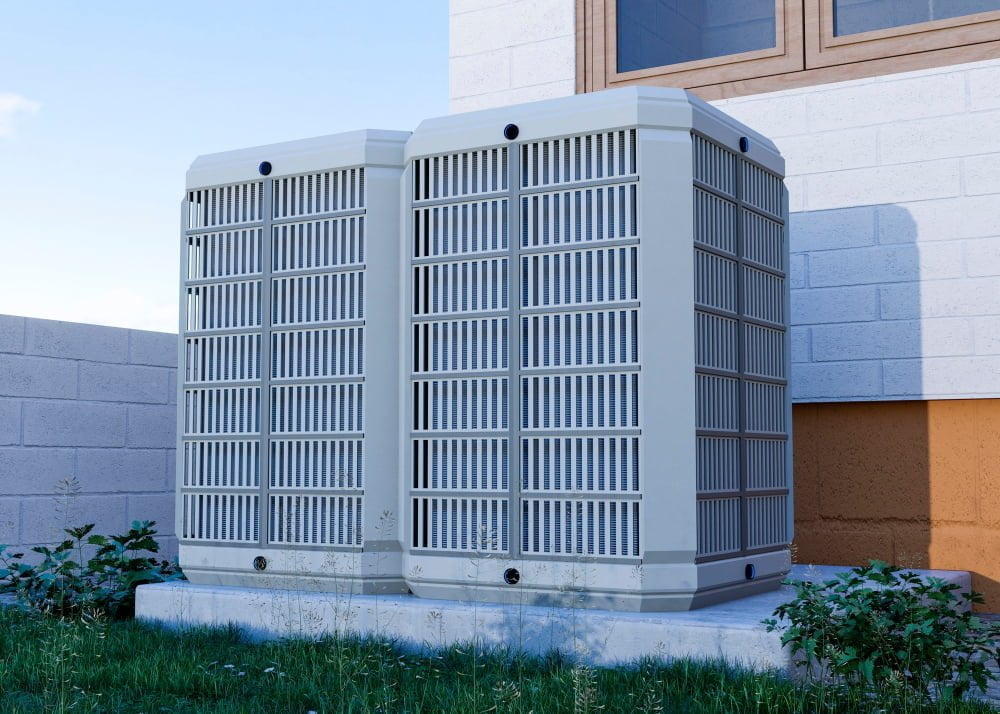
Heat recovery ventilators, also known as HRVs, are a great alternative to electric fireplaces for those who want to improve indoor air quality while still maintaining a comfortable temperature. HRVs work by exchanging stale indoor air with fresh outdoor air while recovering the heat from the outgoing air and transferring it to the incoming fresh air.
This process helps reduce humidity levels and removes pollutants such as dust, allergens, and odors from your home.
One of the advantages of using an HRV is that it can help you save money on heating costs since it recovers up to 80% of heat energy that would otherwise be lost through ventilation. Because they bring in fresh outdoor air into your home continuously throughout the day without opening windows or doors which could let in drafts or pests.
However, one disadvantage is that installation can be costly upfront compared with other alternatives like space heaters or portable fans. Also if not maintained properly over time they may become less efficient at recovering heat energy leading higher electricity bills than expected.
Decorative Candles and Lanterns
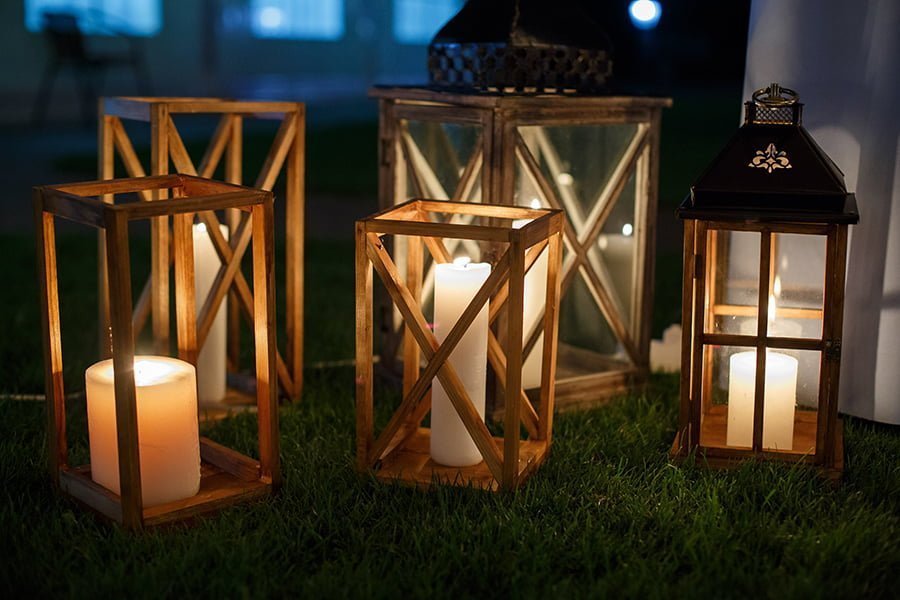
Decorative candles and lanterns are a classic way to add warmth and ambiance to any room. They come in various shapes, sizes, colors, and scents that can complement any decor style.
Candles can be placed on candle holders or trays while lanterns can be hung from the ceiling or placed on tables.
Advantages of using decorative candles and lanterns include their affordability, versatility, portability (especially for outdoor use), ease of use (just light them up!), and the fact that they do not require electricity. Some scented candles have aromatherapy benefits that promote relaxation.
However, there are also disadvantages to consider when using decorative candles and lanterns as an alternative to electric fireplaces. For instance:
- They pose a fire hazard if left unattended or near flammable materials.
- The flame may produce smoke or soot which could stain walls or ceilings over time.
- Some people may have allergies or sensitivities to certain candle fragrances.
- Candles need regular replacement which could add up in cost over time.
Overall though, if used safely with proper precautions taken into consideration such as keeping them away from children/pets/flammable objects then decorative candles & Lantern is one of the best alternatives for creating cozy vibes without breaking your budget!
Recap
Liked this article? Here's what you can read next:

